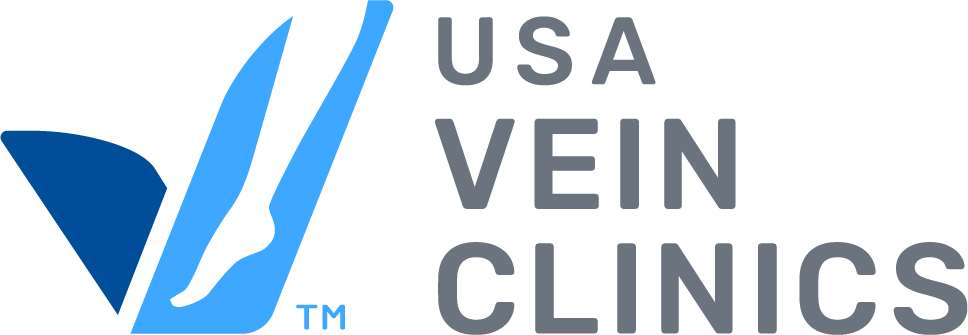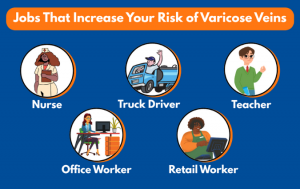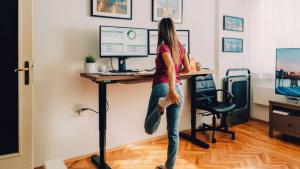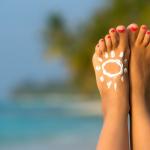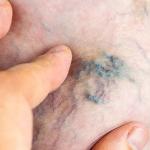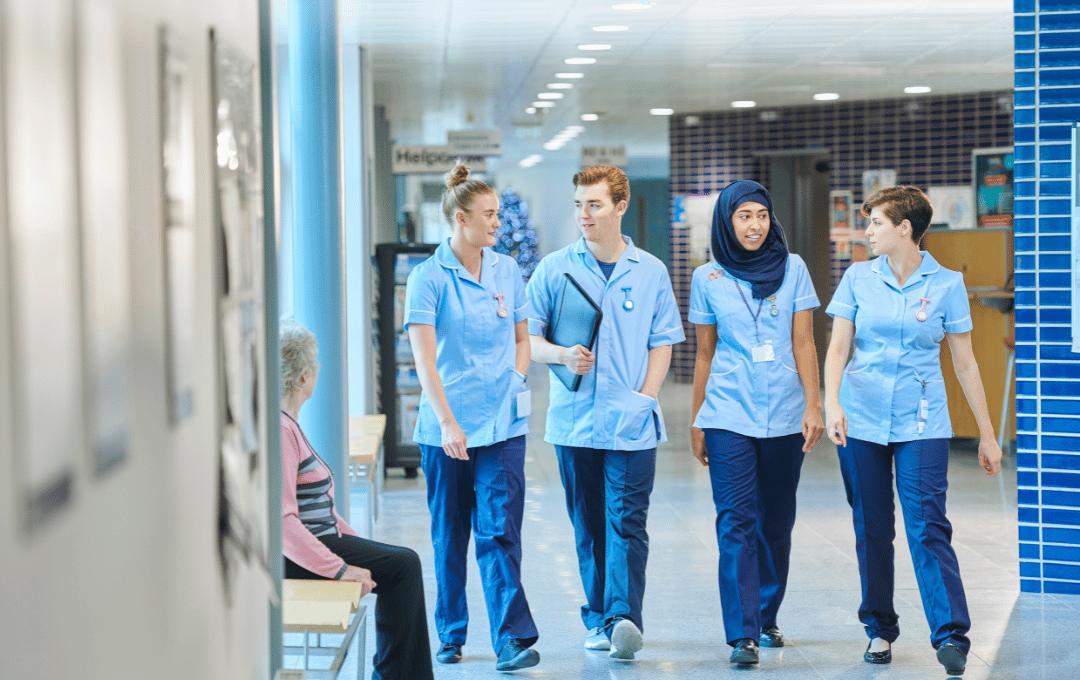
Many people may be unaware that their job could be putting their vein health at risk. While varicose veins are often associated with aging or genetics, factors like prolonged standing or sitting, obesity, hormonal changes, and a sedentary lifestyle can also increase your chances of developing them.
Understanding the cause of varicose veins in your workplace can help you take proactive steps to reduce your risk. If you’re experiencing symptoms like bulging veins, swelling, or restless legs, routine vein screenings are a proactive way to detect potential issues early and maintain optimal vascular health. Learn more about occupations at risk of varicose veins and practical ways to support better circulation throughout your workday below.
Can Your Job Cause Varicose Veins?
Your job can impact your risk of developing varicose veins. When you remain in the same position for hours, whether standing or sitting, it places extra strain on the veins in your legs. Veins rely on surrounding muscle contractions to push blood back to the heart. If you’re not moving regularly, blood can pool in the lower limbs, increasing pressure in the veins and weakening the valves that prevent backflow. Over time, these issues can lead to vein disease—a condition where veins have trouble circulating blood properly, and in many cases, this can result in varicose veins.
Five Jobs That Can Cause Varicose Veins
Specific careers can significantly contribute to vein-related health problems. Hairdressers and factory workers are two examples of jobs that increase the risk of varicose veins due to the long hours they spend on their feet.
Below are the top five occupations at risk of varicose veins:
Nurses and Healthcare Workers: The health risks of a nursing career include limited opportunities to sit, elevate their legs, or take breaks. This profession is among the top jobs at increased risk of varicose veins.
Teachers: Most educators also spend their days on their feet, especially during classroom lectures, which increases their likelihood of developing varicose veins.
Retail Workers and Cashiers: Many people in retail spend the majority of their shift on their feet, which increases their risk of developing varicose veins. Other health risks associated with a retail job include leg swelling and heaviness resulting from fluid retention and poor circulation.
Office Workers: Office jobs, on the other hand, increase the risk of varicose veins due to prolonged sitting. Sedentary behaviors in an office job can pose additional health risks, such as high blood pressure and high cholesterol.
Truck Drivers: Truck drivers travel up to 600 miles a day, spending long periods sitting between refueling stops and making deliveries. This can make it difficult for blood to return to the heart, increasing the risk of varicose veins.
Can Sitting at a Desk Cause Varicose Veins?
Sedentary work environments, such as those found in desk jobs, can contribute to the development of varicose veins. When you sit for hours without changing positions, blood tends to pool in the legs, increasing venous pressure and eventually damaging vein valves. It’s important to move around frequently to prevent the development or worsening of varicose veins.
Best Sitting Position for Varicose Veins
There are ways to promote healthy circulation and avoid varicose veins, even if you sit for most of the workday.
To minimize your risk of vein issues:
- Keep your feet flat on the ground with knees slightly apart.
- Avoid crossing your legs.
- Use a footrest or a low stool to slightly elevate your feet.
- Stand or stretch every 30–60 minutes.
Although these tips can help reduce your risk of varicose veins, they can’t cure existing ones. If you experience persistent varicose vein symptoms, medical treatment may be necessary for relief.
Does Standing at Work Cause Varicose Veins?
Prolonged standing is a common cause of varicose veins. Being on your feet for an extensive period increases pressure in the veins of your legs. Unlike walking, which activates the calf muscles to assist blood flow, standing doesn’t provide that support. Over time, this strain can lead to valve failure and the development of varicose veins.
How to Prevent Varicose Veins When Standing All Day
If your work keeps you on your feet all day, there are plenty of strategies you can use to keep your veins healthy:
| Focus Area | Prevention Tip |
| Feet | Wear shoes with high-quality cushioning and arch support to help with leg fatigue. |
| Leg Movement | Exercises, like ankle circles or calf raises, can help keep blood flowing. |
| Weight Distribution | Alternate weight between legs or rock gently back and forth to promote blood flow. |
| Comfortable Standing | Use a padded mat to reduce strain on your legs and feet. |
| Posture | Maintain good posture; poor posture is an often overlooked cause of varicose veins. |
These simple habits can help reduce the strain on your legs and improve circulation.
Other Workplace-Friendly Tips to Improve Circulation
Whether your work keeps you seated at a desk or standing behind a counter, remaining in the same position for hours can potentially cause varicose veins.
Here are healthy habits that can improve your vein health:
- Take a short walk or stretch every hour.
- Wear compression socks.
- Stay hydrated and eat foods that promote circulation.
- Use a standing desk or an adjustable workstation.
It’s essential to monitor any symptoms that arise, such as leg heaviness, swelling, and pain. These symptoms may indicate vein disease and require medical attention to prevent them from worsening.
Signs Your Veins Need Medical Attention
Varicose veins can signal underlying vein disease, and if left untreated, may significantly impact your quality of life. Even mild symptoms can be early indicators that your veins are under strain.
Common signs of vein disease include:
- Bulging, twisted, or dark purple veins in the legs.
- Chronic leg cramping, aching, heaviness, or swelling.
- Skin discoloration.
- Itching in the lower legs.
If you’re experiencing one or more of these symptoms, consult a vein specialist to talk about them. Prioritizing your vein health now can help prevent complications and the need for more invasive treatment later.
Our vein symptom quiz can help determine if you should schedule a visit with a vein specialist.
Take the Next Step Toward Better Vein Health
Varicose veins can’t go away on their own, and ignoring symptoms can lead to more serious health problems like leg ulcers or chronic venous insufficiency. If you’re at risk of vein disease or are already experiencing symptoms, it’s recommended to schedule a consultation with a vein specialist for early detection and treatment.
USA Vein Clinics offers minimally invasive vein treatments that are effective in reducing symptoms of vein disease. There’s no need for incisions or a lengthy recovery, and the procedures are considered safer than surgery due to a lower risk of complications and side effects.
USA Vein Clinics has helped many people with these FDA-approved procedures, including Yulia N. from Northbrook, IL.
“Working as a teacher and standing a lot, my vein issues unfortunately came back with pain in my legs every evening and very big discomfort during/after long flights,” said Yulia N. After getting her veins treated, she felt tremendous relief. “Now I don’t feel any pain in the evenings and just came back from my long flight trip,” she said. “I was able to make long hours of walking, and the flight was easy going. I would definitely recommend this clinic.”
USA Vein Clinics has over 168 accredited locations nationwide. They accept most health insurance plans and can work with you to develop a repayment plan that allows you to prioritize your health. Take the next step toward better vein health and find a clinic near you to get started.
FAQs About Occupational Risks for Varicose Veins
Is Standing Worse Than Sitting for Vein Health?
Both sitting and standing for prolonged periods can affect vein health, especially when movement is limited. However, the weakening of vein valves, a major cause of varicose veins, is often triggered by prolonged periods of standing because this can place more pressure on the veins compared to sitting.
Do Compression Socks Really Work for Office Workers?
Compression socks are great for improving circulation, as office jobs are at increased risk for varicose veins due to prolonged sitting. Wearing compression socks reduces swelling by preventing blood from pooling in your legs.
Should I Elevate My Legs After Work?
If you work a job that increases your risk of varicose veins, it’s recommended to elevate your legs after work. Elevating the legs can reduce the pressure that’s in your veins after prolonged sitting or standing.”
What Profession is Varicose Veins Most Common in?
The professions most likely to cause varicose veins include healthcare, hairdressing, retail, teaching, and factory work, as employees often remain in one position for extended periods. This places extra pressure on the veins in the legs, increasing the risk of vein problems.
